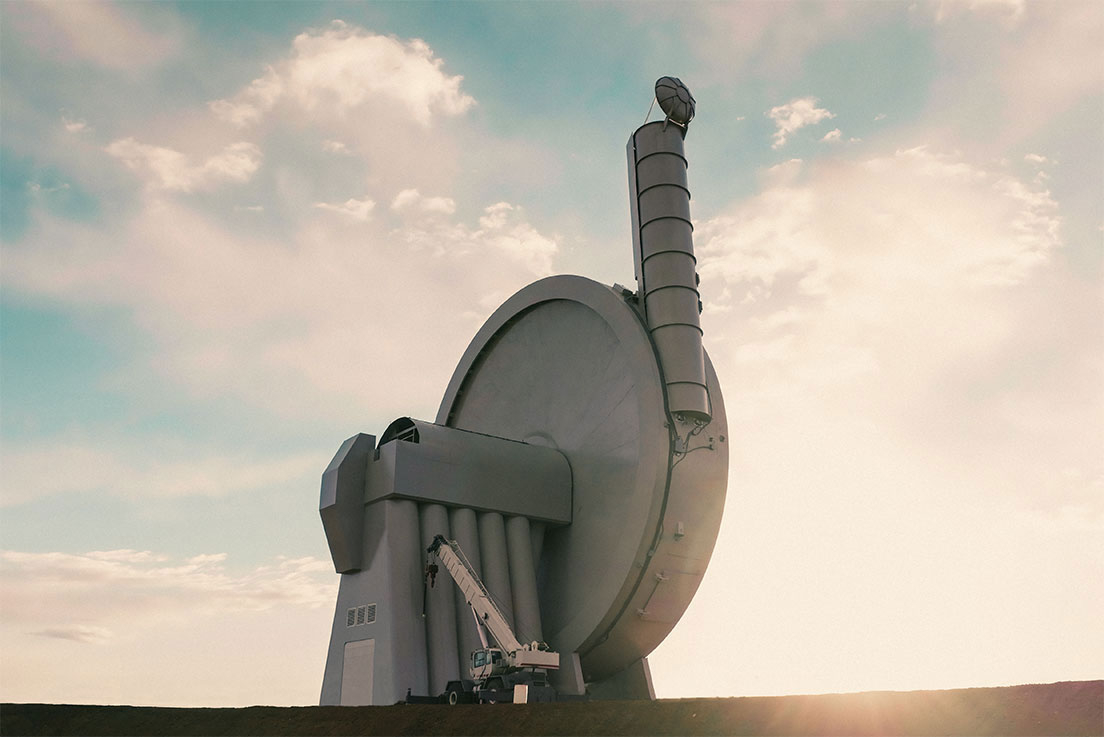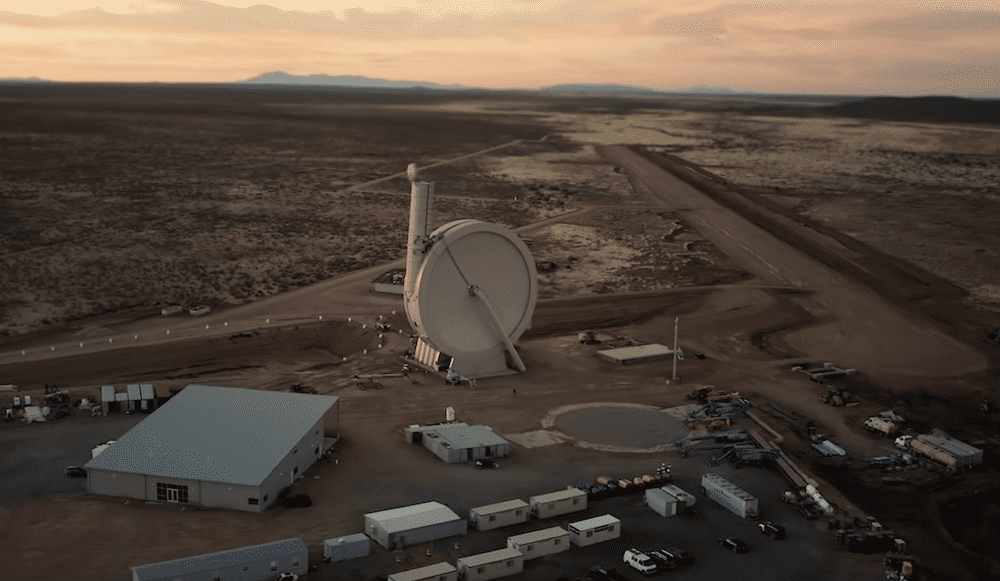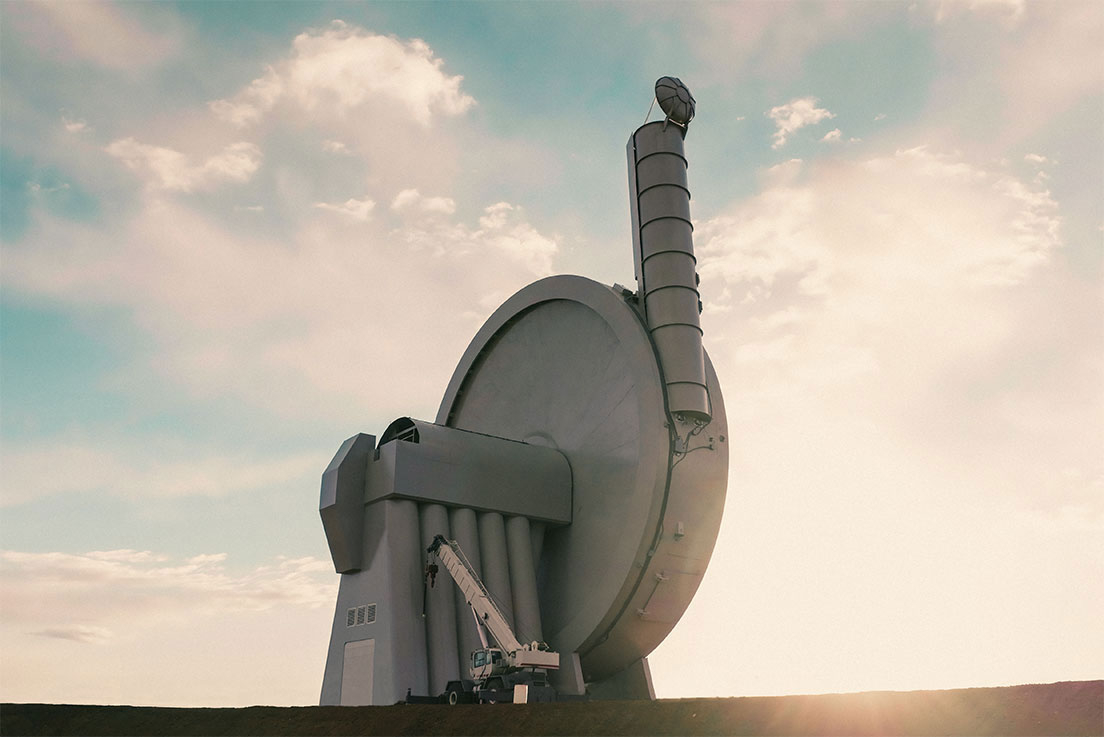
A Closer Look At SpinLaunch’s Recent Progress
Throughout the space industry we are seeing many different companies try unique and ambitious ideas. This could be in rocket design, the manufacturing process, reusability, or even ways to send a payload into orbit. Out of all these companies, SpinLaunch is easily one of the most unique with the goal of using an orbital accelerator rather than your typical launch vehicle.
Over the past few months, SpinLaunch has been attempting to make progress on its unconventional style equipment. This includes tests along with a recent contract signed with NASA for a test flight later this year. Specifically, SpinLaunch signed a Space Act Agreement with NASA to develop, integrate, and fly a NASA payload using the company’s Suborbital Accelerator.
This is significant news for the company as they work to continue progress and receive more attention within the industry. While SpinLauch has many skeptics, the company is confident in its capabilities and the opportunity that an orbital accelerator offers. If successful, it could provide a one-of-a-kind launch service for different customers. Here I will go more in-depth into the recent contract with NASA, progress over the past few months, and plans for the future.
NASA Contract

Only a few weeks ago, SpinLaunch announced a big contract with NASA. Specifically, on April 6th, SpinLaunch tweeted saying, “We’re excited to announce we’ve signed a Space Act Agreement with @NASA_Technology. Through the partnership, we’ll fly a #NASA payload on our Suborbital Accelerator to collect the necessary data to enable potential future commercial launch opportunities.” The Space Act Agreement is part of NASA’s Flight Opportunities Program, which demonstrates promising technologies for space exploration, discovery, and the expansion of space commerce through suborbital testing with industry flight providers. The program is funded by NASA’s Space Technology Mission Directorate at the agency’s Headquarters in Washington, D.C. and managed at NASA’s Armstrong Flight Research Center in Edwards, California. NASA’s Ames Research Center in California’s Silicon Valley manages the solicitation and evaluation of technologies to be tested on commercial flight vehicles. In this case, SpinLaunch will manifest and fly the first NASA payload on a developmental test flight later this year and provide means for post-flight recovery of payload back to NASA. The two organizations will work jointly to analyze the data and assess the system for future flight opportunities. After full review, NASA and SpinLaunch will publish all non-proprietary launch environment information from the test flight.
Jonathan Yaney, Founder and CEO of SpinLaunch mentioned that, “SpinLaunch is offering a unique suborbital flight and high-speed testing service, and the recent launch agreement with NASA marks a key inflection point as SpinLaunch shifts focus from technology development to commercial offerings”. “What started as an innovative idea to make space more accessible has materialized into a technically mature and game-changing approach to launch. We look forward to announcing more partners and customers soon, and greatly appreciate NASA’s continued interest and support in SpinLaunch.” The long term goal however is to develop and use an orbital accelerator. SpinLaunch’s Orbital Accelerator is intended to accelerate a launch vehicle containing a satellite up to 5,000 miles per hour using a rotating carbon-fiber-arm within a 300-ft diameter steel vacuum chamber. By doing so, over 70 percent of the fuel and structures that make up a typical rocket can be eliminated. The company is attempting to leverage existing industrial hardware and commonly available materials to construct the innovative accelerator system, achieving hypersonic launch speeds without the need for any fundamental advancements in material science or usage of emerging technologies. After ascending above the stratosphere, a small, inexpensive propulsive stage provides the final required velocity for orbital insertion and positioning. Through this unique approach, SpinLaunch is providing a fundamentally new way to access space.
Progress & Plans

Besides the recent contract with NASA, SpinLaunch has been busy continuing to test and develop various technology and equipment. Only a few weeks ago SpinLaunch completed the seventh suborbital test flight using the Suborbital Accelerator. Specifically, on April 18th they tweeted saying, “Get an inside look at how we conduct a typical flight test on our Suborbital Accelerator, located at @Spaceport_NM. Learn more about how this 33-meter mass accelerator comes online, spins up, and sends a launch vehicle 30,000 feet into the atmosphere.” This tweet included a video that highlighted the test and some of the progress the company had made. They pointed out that on this most recent test they launched at 1,200 miles per hour which makes it the fastest launch ever on that specific suborbital system. SpinLaunch has been doing these tests quite frequently considering the first test was around 5 months ago in October. Now on the seventh test, trying to increase the speed each time along with gathering more data.
Specifically, in October 2021, SpinLaunch’s first test flight successfully propelled a test vehicle at supersonic speeds and ended with the recovery of the reusable flight vehicle. Since then, the suborbital system has conducted regular test flights with a variety of payloads at speeds in excess of 1,000 miles per hour at Spaceport America, located in New Mexico. SpinLaunch predicts that the first orbital test launches will happen in 2025. It’s important to point out that while the company has had some successful tests with the Suborbital Accelerator, there is a big difference between this system and an Orbital Accelerator. SpinLaunch describes the Orbital Launch System as a fundamentally new way to reach space. The velocity boost provided by the accelerator’s electric drive results in a 4x reduction in the fuel required to reach orbit, a 10x reduction in cost, and the ability to launch multiple times per day. This would provide many different benefits including making space sustainable. With industry plans to launch ten times the number of satellites over the next decade, it is more urgent than ever to develop environmentally sustainable space access technology. Because kinetically launched satellites exit the stratosphere without a rocket, SpinLaunch is trying to enable a future in which constellations of satellites and space payloads can be launched with zero emissions in the most critical layers of the atmosphere. In a future where large numbers of people are traveling to space, structures, equipment, and supplies required to support in-space civilization must also be launched. For tens of thousands of people to someday work and live in space, millions of tons of infrastructure and supplies must be launched. SpinLaunch is confident they ensure that can be done with the least environmental impact possible.
In addition, SpinLaunch highlights that there is high demand for Low Earth Orbit (LEO) constellations of inexpensive small satellites for disaster monitoring, weather, national security, and global communications. Leveraging an in-house Space Systems Engineering Team, as well as partnerships with existing satellite systems providers, SpinLaunch is developing a complete ecosystem of satellite hardware. SpinLaunch satellite buses, and qualified subsystems, are designed to be compatible with any launch system without compromising cost, performance, or mass. Through these turnkey space solutions, SpinLaunch is helping customers eliminate the cost, time, and complexity constraints currently driving space-related business models, ultimately delivering less expensive, scalable access to space. These space systems are an important part of SpinLaunch’s plan.
SpinLaunch engineers have been working to develop a new class of ultra-low-cost satellites for high-g environments. They point out that it can be hard to imagine a delicate satellite surviving a kinetic launch. Intuition suggests that they would need to be heavy, expensive, and have compromised performance. Yet through basic mechanical design, prototyping, and high-g testing, SpinLaunch believes that standard materials and processes can be used to readily build satellites for kinetic launch that perform as well as their conventional counterparts. The structures, mechanical assemblies, batteries, propulsion systems, and solar arrays they have developed and tested have no meaningful mass or cost increase. SpinLaunch is convinced with its in-house experience and high-g testing capabilities, customers can take advantage of kinetic launch without compromise.
Conclusion
All throughout the space industry, different companies and organizations are trying unique and ambitious ideas. These often come with many added risks but a significant payoff if successful. SpinLaunch is a great example as the company is trying to reach orbit in a completely different way than your typical launch vehicle. Over the past few months, SpinLaunch has continued to test its Suborbital Accelerator and even signed a contract with NASA. All of which helps the company progress and work towards reaching orbit for the first time. We will have to wait and see how it progresses and the impact it has on the space industry.
